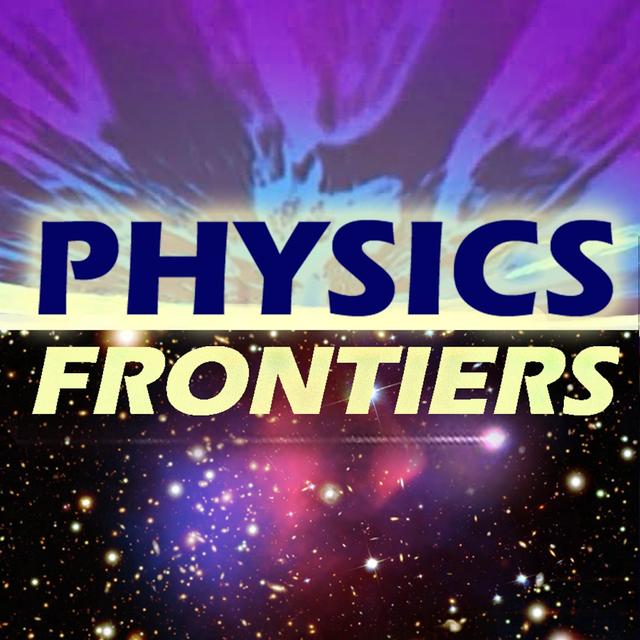The Origin of Inertia
Randy tells Jim about a scheme that uses Mach's Principle - the idea that there is a preferred background frame with respect to the fixed stars - to explain the origin of inertia. Show Notes: http://frontiers.physicsfm.com/21

Jim Rantschler and Randy Morrison discuss physics from elementary particles to cosmological effects at the limits of our theoretical knowledge or have recently emerged.

Randy tells Jim about a scheme that uses Mach's Principle - the idea that there is a preferred background frame with respect to the fixed stars - to explain the origin of inertia. Show Notes: http://frontiers.physicsfm.com/21
Jim talks to Randy about structures that are periodic in time like crystals are periodic in space. Show notes: http://frontiers.physicsfm.com/20
Randy tells Jim about a theory that complements other theories of fundamental physics based upon a phase space symmetry between the 4-position and the 4-momentum of a particle. The upshot of the theory is that there should be a second time dimension and a fourth space dimension, both macroscopic in extent, and the physics we see are 4D projections from the larger 6D space-time. Show notes: http://frontiers.physicsfm.com/18
Randy and Jim talk about traveling through through time, discussing relativity and, in particular, Kurt Goedel's solution for closed timelike curves in General Relativity. Show notes: http://frontiers.physicsfm.com/17
Randy tells Jim about ways in which external vibrations can be used to do useful work in large-scale devices. These processes look at have happens when bistable systems (e.g., a bent cantilever) are subjected to random forcing from the environment. Show notes: http://frontiers.physicsfm.com/16
Randy shows Jim five different ways in which a body can be levitated: by magnetism, by superconductors, by Lenz' Law, by acoustics, and most recently by thermophoresis. Show notes: http://frontiers.physicsfm.com/15
Randy explains Stochastic Electrodynamics to Jim, the theory that vacuum fluctuations are the cause of quantum mechanical behavior. Show notes: http://frontiers.physicsfm.com/14
Jim and Randy discuss strange trajectories observed in triple slit experiments with metallic plates. Photons seem to pass through one slit, come back through the middle slit, and out the third due to their interactions with surface plasmons. There are implications in this experiment about the way in which wavefunctions need to be interpreted in non-relativistic quantum mechanics. Show notes: http://frontiers.physicsfm.com/13
Jim and Randy discuss a cosmological theory that purports to find an explanation for the arrow of time in gravitational theory based on the shape and distribution of matter and how it evolves. Show notes: http://frontiers.physicsfm.com/12
Randy tells Jim about photonic molecules, pairs of photons that create bound states like molecules do through a force mediated through an ultracold gas and similar ideas in optical circuits. They also discuss application of the same for quantum computing. Show notes: http://frontiers.physicsfm.com/11
In this episode Jim and Randy talk about how to evaluate alternative gravity theories. What sort of things do we want them to explain, what experiments do they have to predict, and what theoretical requirements do they have to meet. This is in some ways a continuation of Episode 9 - f(R) Theories of Gravity, but the discussion is relevant to all attempts to amend gravitational theory. Show notes: http://frontiers.physicsfm.com/10 In the program, Randy talks about the outline I sent him. I put th...
Jim and Randy discuss gravitational theories that modify general relativity by changing the action using a polynomial dependence on the Ricci scalar. Although not physically motivated, some of these theories produce effects similar to those of dark matter, dark energy, and cosmological constants. Show notes: http://frontiers.physicsfm.com/9
Jim and Randy discuss how vacuum fluctuations produce the van der Waals forces and the Casimir effect. Van der Waals forces are factors in atomic bonds and the Casimir effect produces an attractive force between nanoscale objects. The claim is that vacuum fluctuations -- the production and annihilation of particle-antiparticle pairs -- are the underlying reason for both effects. Show notes: http://frontiers.physicsfm.com/8
Randy discusses what the Cosmological implications of a negative gravitational mass would be with Jim. If there were a negative gravitational mass (as opposed to inertial mass), then every time that an electron-positron pair was created in the vacuum, that would create a gravitational dipole. This in turn would create effects similar to dark matter, dark energy, and a cosmological constant -- and this in turn would have an effect on the origin of the universe. Show notes: http://frontiers.physic...
Randy shares some of his favorite papers with Jim: papers on general relativity by engineer and science fiction author Robert L. Forward on how general relativity could be used in a terrestrial environment, including proposals for devices and materials. These papers are "General Relativity for the Experimentalist" and "Guidelines to Antigravity." Show notes: http://frontiers.physicsfm.com/6
Randy and Jim discuss a physical analogy to quantum mechanics consisting of a droplet of fluid bouncing off of the waves in a similarly composed fluid that were generated by the droplet's own bounces. The analogy is very close to the de Broglie-Bohm interpretation of quantum mechanics. Show notes: http://frontiers.physicsfm.com/5
Randy tells Jim about the emerging field of Phononics: using quantum particles of heat in materials for information processing in advanced materials. Show notes: http://frontiers.physicsfm.com/4
Randy talks to Jim about gravitoelectromagnetism. Based on the similarity between Newtonian gravity and electrostatics, there should be a second gravitational field,the gravitomagnetic field. What are the implications of the existence of such a field, and how large are those effects? Show notes: http://frontiers.physicsfm.com/3
Jim talks to Randy about the pilot wave interpretation of quantum mechanics, which separates the particle and wave behavior of a non-relativistic quantum particle into that of a particle moving in and exciting a quantum mechanical medium. Show notes: http://frontiers.physicsfm.com/2
Randy talks to Jim about Carver Mead's G4V, a formulation of gravitation combining the equivalence of inertial and gravitational mass with a vector potential formulation of gravitation (a 4-vector form, with the usual gravitational potential in the temporal component). Show notes: http://frontiers.physicsfm.com/1